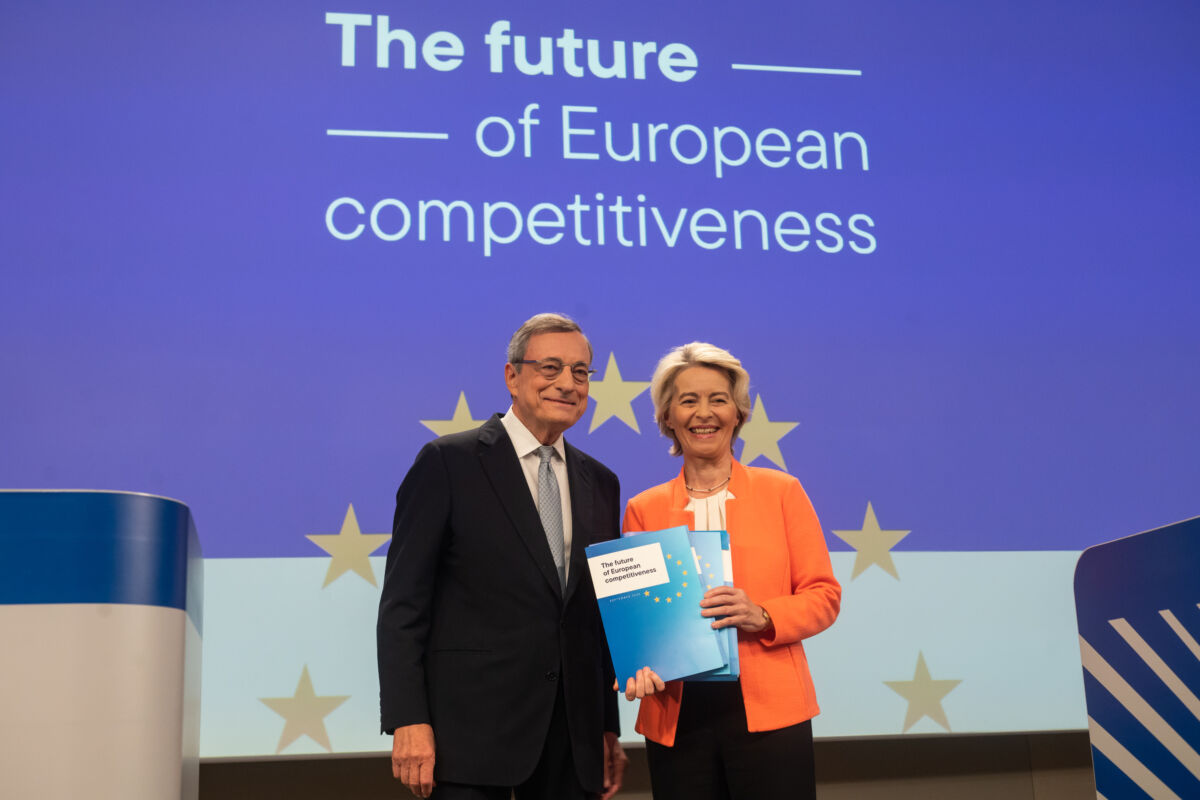Why does the EU fail to produce its own Google, Amazon or Facebook? Is Europe lacking entrepreneurship, technical savvy or simply imagination? Contrary to what many think, in every year for the past five years, the EU has created more high-tech start-ups than the US; however, many European start-up firms whither on the vine due to a lack of finance.
Yet a simple solution has been lying in plain sight for decades – we simply need to grasp it. The answer, as with a great many questions, is money.
Europe’s timidness on display
A root cause is that Europeans are timid investors and many of us lack the financial sophistication to invest sensibly. In the EU, 31 % of household savings remain in currency or deposits, versus 12 % in the US, leaving less scope for households to invest in stocks and bonds.
Largely as a result, and relative to GDP, the EU has twice as much money in its banks as the US and only half as much in capital markets for stocks. The same goes for bonds.
This is problematic for innovation. EU firms get some 80 % of their finance from bank loans – clearly, not the way to finance risky start-ups that typically have no established track record of earnings and whose assets are largely intangible and thus unsuitable to serve as collateral.
When we look at finance for start-up firms, the situation is even worse. The US has 20 times as much venture capital as the EU – EUR 1.3 trillion, compared to a paltry EUR 72 billion. Firms seeking pre-IPO funding obtain on average only a fifth as much venture capital or only a twentieth as much private equity funding as their US counterparts.
The European institutions have been wringing their hands for years and will occasionally find a way to pump one or two billion euros into funding start-ups. This is all well and good but it’s totally out of scale for the magnitude of the problem.
How did the US do it?
Overlooked in all of this is an understanding of how the US achieved its Silicon Valley. Brilliant, entrepreneurial technologists surely played a role, as did US government funding for research, but a key development was a little-noticed change in the US regulation of pension funds.
Until ERISA was enacted in 1974, pension funds were generally restricted to relatively safe investments. ERISA changed this by recognising that a ‘prudent person’ would typically want a portfolio reflecting a mix that included some riskier instruments.
This unleashed a growing flood of pension fund money into venture capital funds. Without this, Silicon Valley as we know it now would have been unthinkable.
The EU today is in much the same position as the pre-ERISA US – and this is a key reason why a ‘European Silicon Valley’ isn’t going to happen anytime soon.
But it needn’t be this way. EU pension funds hold assets of some EUR 4 trillion, while insurance (where some of the plans are pension-like) has assets of about EUR 9 trillion. Pension funds invest billions into venture capital each year but this seemingly large investment is peanuts – what they invest per year is less than one one-hundredth of 1 % of their assets.
There’s no shortage of promising EU firms to invest in – the EU indeed generates more start-ups than the US per year and the return on venture capital investments is running about 6 % higher in the EU. Venture capital offers high returns, some 29 % on average, with surprisingly low volatility.
Clear and straightforward measures needed
It would be natural to react by saying that pension funds shouldn’t put future pensioners at risk but this misses the point. Any investment advisor would tell any firm or any family that a portfolio should be diversified with a mix of risk-return profiles that align with one’s investment goals.
The pension funds understand this, and most would like to be freed from overly restrictive Member State investment rules. And a twenty-fold increase in pension funds’ current investments would roughly triple the total annual contribution to venture capital in the EU but would still represent less than two-tenths of a percentage point of pension funds’ assets. The risk would thus be negligible, but this would be a big enough cash infusion to have a real impact!
The same logic holds for future pensioners – a balanced portfolio with a mix of instruments would tend to benefit them, especially those further away from retirement. One might perhaps worry about those closest to retirement age, but simple rules or guidelines might discourage or prevent them from investing unwisely in high-risk instruments.
The ongoing shift in Europe from defined benefits pension schemes to defined contribution ones (where the amount paid out reflects the performance of investments), coupled with a shift away from so-called Pay as You Go (PAYG) schemes, lends itself to plans where future pensioners could steer their investments to reflect their individual risk sensitivities and investment needs.
In sum, the benefits that these changes could lead to for pension funds and insurance, for future pensioners, and for EU tech start-ups are clear, and this has been recognised in both the Draghi report and in the Commission’s just-released Competitiveness Compass. The measures that would be needed to put all this in place are likewise clear. To enable insurance funds that want to invest a prudent portion of their assets into venture capital or private equity, changes to SOLVENCY II to offer greater flexibility and to revise overly conservative reserve requirements for these relatively modest investments would need to happen.
For occupational funds, the IORPS Directive puts few constraints on pension fund investments – changes would likely be needed in Member State law but only in the Member States where pension funds have assets available for investment (thus not in those with pay-as-you-go (PAYG) pension funds). Changes would probably not be needed in the handful of Member States whose laws already provide occupational pension funds with investment flexibility.
Additional measures could facilitate the pooling of these investments across multiple funds to reduce investment overhead. Once effective laws are in place that permit greater flexibility, the normal economic incentives of the funds would motivate them to gradual shift funds where they can do the most good – no additional measures should be necessary.
Of course, the biggest barriers to enacting this kind of change have historically been European conservatism, a lack of political will and a lack of audacity. With the new EU’s new focus on enhancing productivity, the time is now finally right to make these changes.
This CEPS Expert Commentary is part of a special series being published prior to the CEPS Ideas Lab on 3-4 March 2025 to showcase some of the most innovative ideas we’ll be rigorously debating with our participants. More info can be found on the official Ideas Lab 2025 website.





































